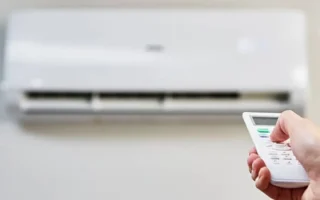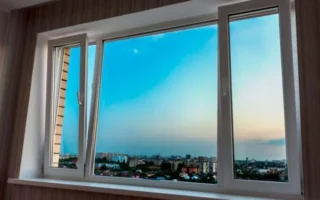Finding the perfect setting for your window AC ensures a comfortable and cost-effective cooling experience. You can optimize its performance by considering factors such as climate, energy efficiency, and common mistakes to avoid.
Set your window AC within the optimal temperature range for different climates. This will keep you comfortable and help you save on energy costs. To maximize its efficiency, avoid common mistakes like improper installation or placing the unit in direct sunlight.
If a window AC isn’t suitable for your living situation, explore alternative cooling options like portable air conditioners or ductless mini-split systems. Each option has its advantages depending on your space and needs.
Factors to consider when choosing a setting for your window AC

When setting up your window AC, there are a few key factors to consider. First off, think about the size of the room you are cooling. A larger room may require a lower temperature setting than a smaller space. Next, consider your climate – hotter regions may need a more relaxed setting than cooler climates.
Consider how many people will be in the room and whether any heat-producing appliances are running. More occupants or devices can generate additional heat that your AC will need to combat. Also, consider your comfort level—some prefer a slightly warmer environment, while others like it frosty cold.
Optimal temperature range for different climates
When setting the optimal temperature for your window AC, considering the climate you live in is critical. In hot and humid climates, such as tropical regions, setting your AC between 75-80°F can help maintain a comfortable indoor environment without overworking the unit. On the other hand, in arid climates like deserts, a slightly higher temperature range of 80-85°F may be more suitable.
For temperate climates with moderate summers, aiming for a range of 70-75°F can balance comfort and energy efficiency. Adjusting the settings based on location is essential to ensure efficient cooling while keeping utility costs in check.
Energy efficiency and cost-saving tips

When it comes to optimizing your window AC for energy efficiency and cost savings, a few simple tips can make a big difference.
Make sure to clean or replace the air filters in your unit regularly. Clogged filters restrict airflow and force the AC to work harder, leading to higher energy consumption.
Use a programmable thermostat that regulates the temperature based on when you’re at home or away. This helps avoid running the AC constantly at full blast when no one is around.
During the hottest parts of the day, keep your blinds or curtains closed to block out the sun and reduce heat gain.
Ensure proper insulation around the unit and seal any gaps around windows or doors to prevent cool air from escaping and warm air from seeping in.
Common mistakes to avoid when setting up a window AC
One common mistake to avoid when setting up your window AC is placing it in direct sunlight. This can cause the unit to work harder than necessary, leading to inefficiency and increased energy consumption. Install your AC on the shadier side of your home for optimal performance.
Another mistake is not paying attention to proper insulation around the unit. Cool air can easily escape without adequate insulation, making it harder for your AC to maintain a comfortable indoor temperature. Seal gaps or cracks around the unit with weather stripping or foam tape.
Setting the temperature too low may seem like a quick way to cool down, but it can actually lead to higher energy bills. Find a balance by setting your AC at a moderate temperature that keeps you comfortable without overworking the unit.
Alternative cooling options for different living situations
Living in a space without the option for a window AC doesn’t mean you have to sweat it out all summer. Alternative cooling options can help beat the heat in various living situations.
For smaller areas like bedrooms or offices, portable air conditioners offer flexibility and ease of use. These units can be moved from room to room, providing targeted cooling where needed most.
If you’re looking for a more budget-friendly option, fans are a simple yet effective way to circulate air and create a more relaxed environment. Ceiling fans work well in larger spaces while oscillating fans are great for smaller rooms.
Another eco-friendly choice is evaporative coolers, also known as swamp coolers. These devices use water evaporation to lower the air’s temperature and are ideal for dry climates.




